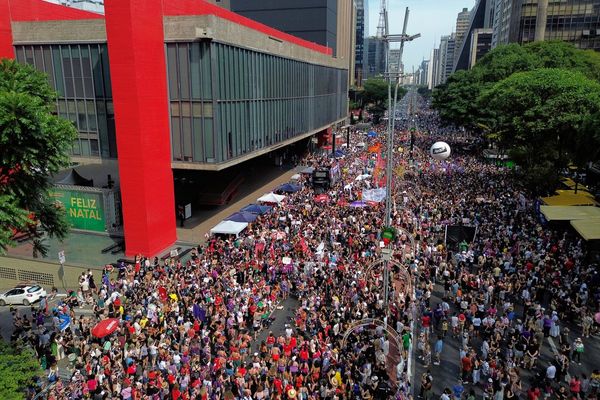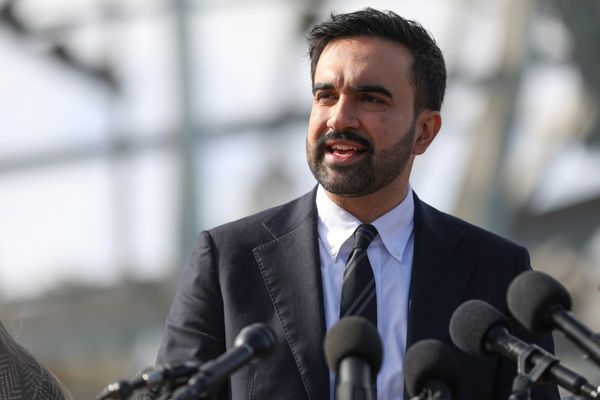I visited Ukraine last week to update my knowledge of the military situation there. I was privileged to be invited to visit Kharkiv by a friend – and spent several days there seeing the sights, while avoiding the more dangerous parts of the city where drone and missile attacks are relatively common.
There aren’t many trains to Kharkiv, and if you’re late in booking, then it’s an eight-hour bus ride from the capital Kyiv. Buses in Ukraine, like anywhere else, have their advantages. For a start, there is the opportunity to see some of the small and often very poor communities on the way. These towns say a great deal more about the country than the sophistication and relative wealth of Kyiv.
It is striking that while Kyiv has no apparent shortage of military-age men on the streets and in the bars and restaurants, the eastern towns and Kharkiv itself are notably man-free. When you do see males between 25 and 60 (the ages between which men are liable to conscription), they are clearly on leave from the front.
Kharkiv, Ukraine’s Soviet capital between 1919 and 1934, was the centre of tank and military production until 2022. Now its dozens of factories are silent. With Russia about 25 miles away there is little warning for missile or drone attacks, and it would be impossible to sustain any kind of wartime production. The eastern suburbs have been ravaged by artillery and bombs and are almost uninhabited.
Kharkiv’s centre is far more visibly embattled than the almost undamaged centre of the country’s capital. Many public buildings, including those around its vast central Freedom Square, have been smashed or burned out. Nonetheless throughout the city, few windows are visibly broken. As soon as blast shatters them, they are boarded up almost immediately by the astonishingly efficient city authorities. The city is remarkably clean and evidently far better run than most English cities.
Life during wartime
At first sight life seems to go on much as anywhere else. Shevchenko and Gorky parks are immaculate in the summer sunshine with flowers in bloom and children riding their little trains along the litterless paths. Something of the Soviet idyll remains, with classical music wafting through trees, piped in through speakers.
The plush Nikolsky shopping mall just off the central Sumy Prospekt, said to be the largest in Ukraine, is well stocked, bright and vibrant. At night the bars are busy. Their clientele is regarded by their young counterparts in Kyiv as little short of crazy just for being there. It is appropriate that Kharkiv’s proud epiphet – “unbreakable” – is seen on signs everywhere.
Despite all this, there is an abiding sense of emptiness. Before the full-scale war began in 2022, Kharkiv had a population of around 1.5 million. My friend, an academic, estimates that less than half remain, although no official figures are available. Perhaps a million are abroad or elsewhere in Ukraine. People worry about how many will return.
The city was Ukraine’s academic powerhouse, hosting among its 30 or so colleges and universities the country’s oldest, the Karazin Kharkiv National University, named after its eponymous founder in 1804. This year, student enrolment is expected to be well under 100,000 – down from 300,000 before the war. Previously, many students were from Asia and Africa – a tradition stretching into Soviet times. They are all gone now and may never come back.
It is thought not to be advisable for foreigners to stay in hotels. Several of them have been targeted by the Russians on the basis that journalists may be staying there. Foreign media and troops from the Ukrainian Army’s foreign legion are the only non-Ukrainians seen around now, and then not very often. With so many apartments empty, there is no shortage of accommodation on offer.
Everpresent war
The war is always there. There are few commercial advertisements. Instead, the ads on bus shelters, hoardings and buildings promote the images of leaders of the various elite army corps: Azov, Kartiia (which defends Kharkiv), the marines, the 93rd mechanised.
These young generals are likely to be prominent in a post-war Ukraine. Citizens are never left in any doubt that they and their men stand directly between them and the brutalities of the Russian army.
Despite its firm ground defences, Kharkiv has little of the kind of air defences that protect Kyiv. Sirens sound half a dozen times a day and at all hours of the night, accompanied by a baleful female voice echoing almost preternaturally over the rooftops: “Attention, air alarm. Please proceed to shelters.”
No Patriot anti-aircraft missiles streak into the skies over Kharkiv – it’s just too close to potential Russian counterstrike capabilities which could identify and target the critical launchers and radars. The rapid-fire anti-aircraft guns, which provide more encouragement than efficacy, can be heard at night all over the city. The occasional thump announces a drone or missile strike.
The bus back to Kyiv and the west begins its journey in one of the “fortress cities” of Donetsk Oblast – or province – picking up passengers in Kharkiv. Most are women with large bags or tired soldiers, going home for their few days’ leave away from the front, the drones and the artillery. The bus winds once again through those dilapidated towns and villages. Few get off in the capital. I’m reminded once again that this, like all others is a poor man’s war.
Frank Ledwidge does not work for, consult, own shares in or receive funding from any company or organisation that would benefit from this article, and has disclosed no relevant affiliations beyond their academic appointment.
This article was originally published on The Conversation. Read the original article.







